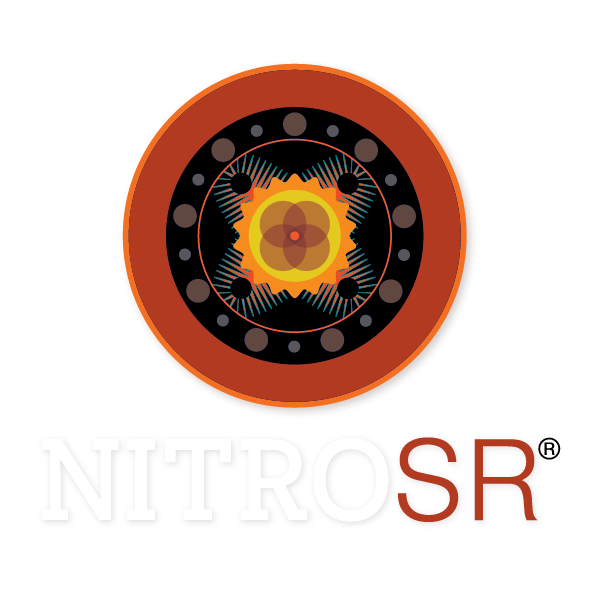NitroSR: Extend Nitrogen Release Over Time
NitroSR is a slow release foliar fertilizer that derives its slow–release properties from methylene urease (estimated release pattern is 10–14 days.) NitroSR can be used on a broad spectrum of field, fruit, vegetable, and ornamental plants. Contact should be avoided with strong acids or aluminum, mild steel, and brass. One gallon of this product contains 0.045 pounds of elemental Boron and 2.45 pounds of Nitrogen. 25% of the Nitrogen in this product is slow–release.
Use Rates
NitroSR can be used for ground and aerial applications.
- Corn (Field, Sweet, Silage): 3–5 gal/acre at V4 to V8 as a partial side–dress Nitrogen replacement. 1–3 gal/acre at V10 as a Nitrogen supplement. 1–2 gal/acre with fungicides or insecticides.
- Soybeans: 1–3 gal/acre at V6 to R3 as a Nitrogen supplement
- Cereal Grains: 1–3 gal/acre at stage 2 to stage 8 as a partial replacement of soil–applied Nitrogen. 1–3 gal/acre at or near stage 8 (flag leaf) as a Nitrogen supplement.
- Alfalfa, Grass Hay and Pastures: 4–6 qt/acre after each cutting when sufficient foliage is present
- Apples: 4–6 qt/acre prior to fruit set or post–harvest
- Asparagus: 6–10 qt/acre at the beginning of mid–fern development and repeat at 14–21 day intervals
- Beans (Dry): Single Application: 10 qt/acre at early pod formation. Multiple Applications: 4–6 qt/acre at early full flower and repeat in 10–14 days.
- Broccoli: 6–10 qt/acre after thinning, then repeat at early head formation. Repeat again in 14–21 days.
- Cabbage: 6–10 qt/acre after thinning, then repeat at early head formation. Repeat again in 14–21 days.
- Cauliflower: 6–10 qt/acre after thinning or transplant, then repeat at early head set. Repeat again at 10–14 day intervals.
- Celery: 4–6 qt/acre when plants are 8–12 inches tall and repeat at 10–14 day intervals
- Cherries: 4–6 qt/acre prior to fruit set
- Christmas Trees (Commercial): 4–10 qt/acre (3–7.5 oz per 1,000 square feet) when sufficient foliage is present
- Cranberries: 4–6 qt/acre at hook stage and repeat after fruit set
- Cucumbers: Single Application: 10–16 qt/acre at early fruit set. Multiple Applications: 4–6 qt/acre at early flowering and repeat at 10–14 day intervals.
- Grain Sorghum: 4–6 qt/acre after pollination
- Grapes: 2–4 qt/acre prior to fruit set
- Lettuce: 4–6 qt/acre after thinning, then repeat at early head formation. Repeat again at 10–14 day intervals.
- Nectarines: 6–10 qt/acre prior to fruit set
- Nursery Stock & Ornamentals: 4–10 qt/acre (3–7.5 oz per 1,000 square feet) when sufficient foliage is present. PRECAUTION: If applying this product undiluted to nursery stock or ornamentals, avoid possible leaf/tip burn by testing a small sampling of plants for at least one week prior to applying product to entire stock.
- Onions: 4–6 qt/acre at mid–set development and repeat at 14–21 day intervals
- Peaches: Single Application: 6–10 qt/acre prior to fruit set
- Pears: 4–6 qt/acre prior to fruit set or post–harvest
- Peas: 4–6 qt/acre at early flowering and repeat in 10–14 days
- Peppers: 4–6 qt/acre at early fruit set and repeat in 10–14 days
- Plums: 6–10 qt/acre prior to fruit set
- Potatoes: Single Application: 10–16 qt/acre at mid–tuber development. Multiple Applications: 4–6 qt/acre at tuber initiation and repeat at 10–14 day intervals until maximum tuber development is reached.
- Pumpkins: 6–10 qt/acre at early fruit set and repeat at 10–14 day intervals
- Spinach: 6–10 qt/acre when sufficient foliage is present and repeat in 14–21 days
- Strawberries: 2–3 qt/acre at early flowering and repeat every 14 days. First fall application may be applied when the height of new growth is at least 3 inches.
- Sugar Beets: 10 qt/acre at the 10–12 leaf stage and repeat at the 20 leaf stage
- Sunflowers: 4–6 qt/acre when outer seeds start to fill and repeat in 10–14 days
- Sweet Potatoes: 4–6 qt/acre at tuber initiation and repeat in 10–14 days
- Tomatoes: Single Application: 10 qt/acre 10–14 days after full bloom. Multiple Applications: 4–6 qt/acre at full bloom. Repeat at 10–14 day intervals.
- Watermelons: 6–10 qt/acre at early flowering and repeat 7–10 days later


